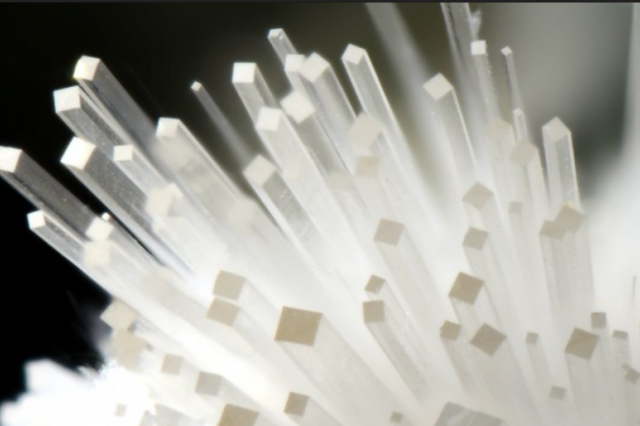
Learn More
Use field-specific adjectives to describe the splendor you see in our planet’s rocks and minerals.
Earth’s building blocks are rocks, and there’s a huge diversity to be explored. In this lesson, students will learn to use field-specific adjectives to describe rocks and minerals during a visit to the Museum’s Gem and Mineral Hall.
Students will understand that scientists use adjectives to record observations.
See Learning Standards at the bottom.
In one classroom session before visiting the Museum, review sentence structure and adjectives and introduce the lesson concepts and vocabulary. During a trip to the Museum, explore and practice observation using new vocabulary, complete the worksheet, and reflect and review on the lesson.
Pre-Visit
In your classroom, review sentence structure with your students, with an emphasis on adjectives and how to use them. Practice using adjectives by having students form sentences about classroom objects. Next, explain to students that adjectives are very important in science, because they help scientists record good observations. Often, scientists use a particular set of adjectives unique to their field; this helps scientists easily collaborate on and communicate their observations with one another.
For example, geologists, scientists who study the Earth, use a special set of adjectives to talk about how different minerals look. One important set of adjectives they use refers to the luster of rocks and minerals. Luster describes the way light is reflected off a rock or mineral. Two significant categories of luster are metallic and non-metallic. Metallic is when a mineral looks shiny like a metal, and non-metallic is when a mineral has qualities other than shine. There are many types of non-metallic luster, including vitreous–when a mineral looks glassy; greasy–when a mineral looks like it’s covered in a thin layer of oil; and waxy–when a mineral appears waxy, like a candle. You may choose to show students photos of these examples and/or practice with specimens in the classroom. Explain to the students that they will be using this new vocabulary during a field trip to the Natural History Museum!
Visit
At the Museum, have students explore the Gem and Mineral Hall and observe the various display cases. Encourage students to practice using new vocabulary as they observe minerals with differing lusters. Next, instruct students to choose one mineral to write about. Using the Let's Talk Rock Worksheet, students will record adjectives to describe their favorite mineral, and use them to write 3-4 sentences about the specimen. At least one of the adjectives should be a new vocabulary term. Either on the bus or back in the classroom, reflect on the activity with your students. Why might scientists like geologists use special adjectives? Were the adjectives helpful in describing your specimen?
Variations & Extensions
NGSS
1-LS1, 2-PS1-1, 3-ESS2
SEPs
3, 4, 7, 8
CCSS
L.5.b.c.d, L.6
CA State
Science 1.4a
ELA
1.1.6.7